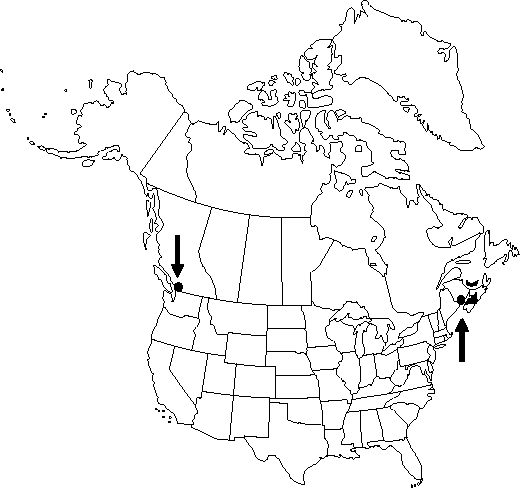Difference between revisions of "Quercus robur"
Sp. Pl. 2: 996. 1753.
imported>Volume Importer |
imported>Volume Importer |
||
| Line 57: | Line 57: | ||
|publication year=1753 | |publication year=1753 | ||
|special status=Introduced | |special status=Introduced | ||
| − | |source xml=https:// | + | |source xml=https://bitbucket.org/aafc-mbb/fna-data-curation/src/2e0870ddd59836b60bcf96646a41e87ea5a5943a/coarse_grained_fna_xml/V3/V3_31.xml |
|genus=Quercus | |genus=Quercus | ||
|section=Quercus sect. Quercus | |section=Quercus sect. Quercus | ||
Latest revision as of 21:47, 5 November 2020
Trees, deciduous, to 30 m. Bark light gray, scaly. Twigs brown, 2-3 mm diam., glabrous. Buds dark brown, ovoid, distally obtuse, 2-3 mm, glabrous. Leaves: petiole 3-6 mm. Leaf blade obovate to narrowly elliptic or narrowly obovate (some cultivars oblanceolate), (50-)70-150(-200) × (20-)35-85(-100) mm, base strongly cordate, often minutely revolute or folded, margins moderately to deeply lobed, lobes rounded or retuse distally, sinuses extending 1/3-7/8 distance to midrib, secondary veins arched, divergent, (3-)5-7 on each side, apex broadly rounded; surfaces abaxially light green, glabrous or sparsely pubescent, glabrous at maturity, adaxially deep green to light green or gray, dull or glossy. Acorns 1-3, on very thin (1-2 mm diam.), flexuous peduncle (25-)35-65(-100) mm; cup hemispheric to deeply goblet-shaped, enclosing 1/4-1/2 nut or more, scales closely appressed, often in concentric rows, finely grayish tomentose; nut brown, ovoid, oblong, or cylindric, 15-30(-35) × 12-20 mm, glabrous. Cotyledons distinct. 2n = 24.
Phenology: Flowering spring.
Habitat: Roadsides, pastures, forest margins and woodlands
Elevation: 0-1000 m
Distribution

Introduced from Europe, B.C., N.B., N.S., P.E.I.
Discussion
Quercus robur is one of the oaks most commonly cultivated in temperate and subtropical parts of the world. In North America it is most commonly seen in the eastern and northwestern parts of the United States and and in southeastern and southwestern Canada, where it tolerates a wide array of conditions and is extremely hardy. In Washington, New Brunswick, and Nova Scotia, apparently reproducing populations persist in the wild. Elsewhere, although actual naturalization appears to be rare, Q. robur should be expected to persist around old homesites and other places of cultivation.
Quercus robur most closely resembles our native species Q. alba in leaf form. In contrast with Q. alba, which has relatively long petioles (longer than 10 mm), acute leaf bases, and subsessile fruit (rarely on peduncles to 25 mm), Q. robur is easily distinguished by its shorter petioles (less than 10 mm), cordate, almost clasping, leaf bases, and fruit on long (more than 35 mm), thin peduncles.
Quercus robur is one of the oaks most widely celebrated in literature; it has wood of exceptionally high quality for the manufacture of furniture, and it previously was the most important wood used in the manufacture of wooden sailing vessels in Europe.
Selected References
None.